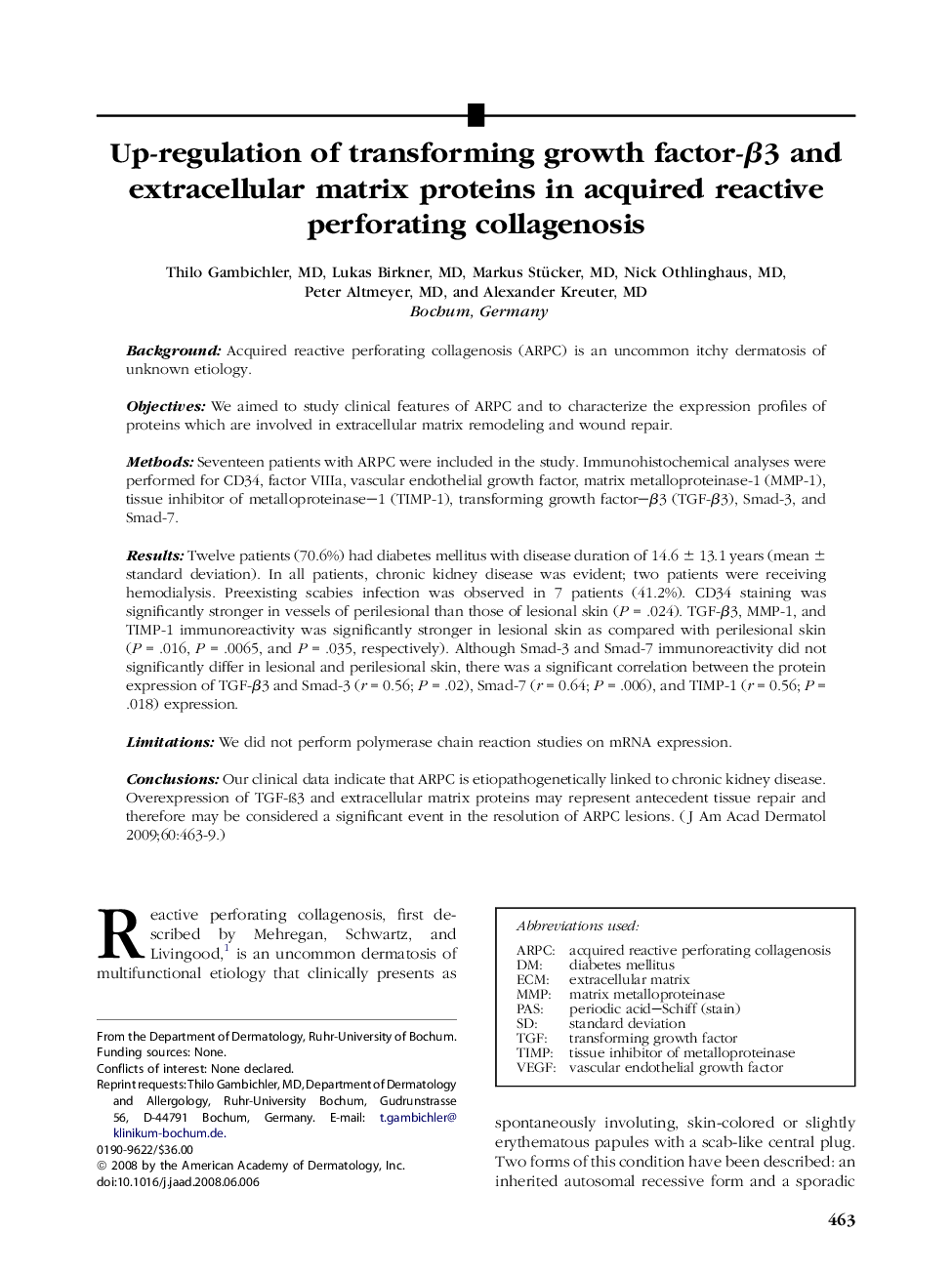| کد مقاله | کد نشریه | سال انتشار | مقاله انگلیسی | نسخه تمام متن |
|---|---|---|---|---|
| 3209917 | 1587611 | 2009 | 7 صفحه PDF | دانلود رایگان |

BackgroundAcquired reactive perforating collagenosis (ARPC) is an uncommon itchy dermatosis of unknown etiology.ObjectivesWe aimed to study clinical features of ARPC and to characterize the expression profiles of proteins which are involved in extracellular matrix remodeling and wound repair.MethodsSeventeen patients with ARPC were included in the study. Immunohistochemical analyses were performed for CD34, factor VIIIa, vascular endothelial growth factor, matrix metalloproteinase-1 (MMP-1), tissue inhibitor of metalloproteinase–1 (TIMP-1), transforming growth factor–β3 (TGF-β3), Smad-3, and Smad-7.ResultsTwelve patients (70.6%) had diabetes mellitus with disease duration of 14.6 ± 13.1 years (mean ± standard deviation). In all patients, chronic kidney disease was evident; two patients were receiving hemodialysis. Preexisting scabies infection was observed in 7 patients (41.2%). CD34 staining was significantly stronger in vessels of perilesional than those of lesional skin (P = .024). TGF-β3, MMP-1, and TIMP-1 immunoreactivity was significantly stronger in lesional skin as compared with perilesional skin (P = .016, P = .0065, and P = .035, respectively). Although Smad-3 and Smad-7 immunoreactivity did not significantly differ in lesional and perilesional skin, there was a significant correlation between the protein expression of TGF-β3 and Smad-3 (r = 0.56; P = .02), Smad-7 (r = 0.64; P = .006), and TIMP-1 (r = 0.56; P = .018) expression.LimitationsWe did not perform polymerase chain reaction studies on mRNA expression.ConclusionsOur clinical data indicate that ARPC is etiopathogenetically linked to chronic kidney disease. Overexpression of TGF-ß3 and extracellular matrix proteins may represent antecedent tissue repair and therefore may be considered a significant event in the resolution of ARPC lesions.
Journal: Journal of the American Academy of Dermatology - Volume 60, Issue 3, March 2009, Pages 463–469